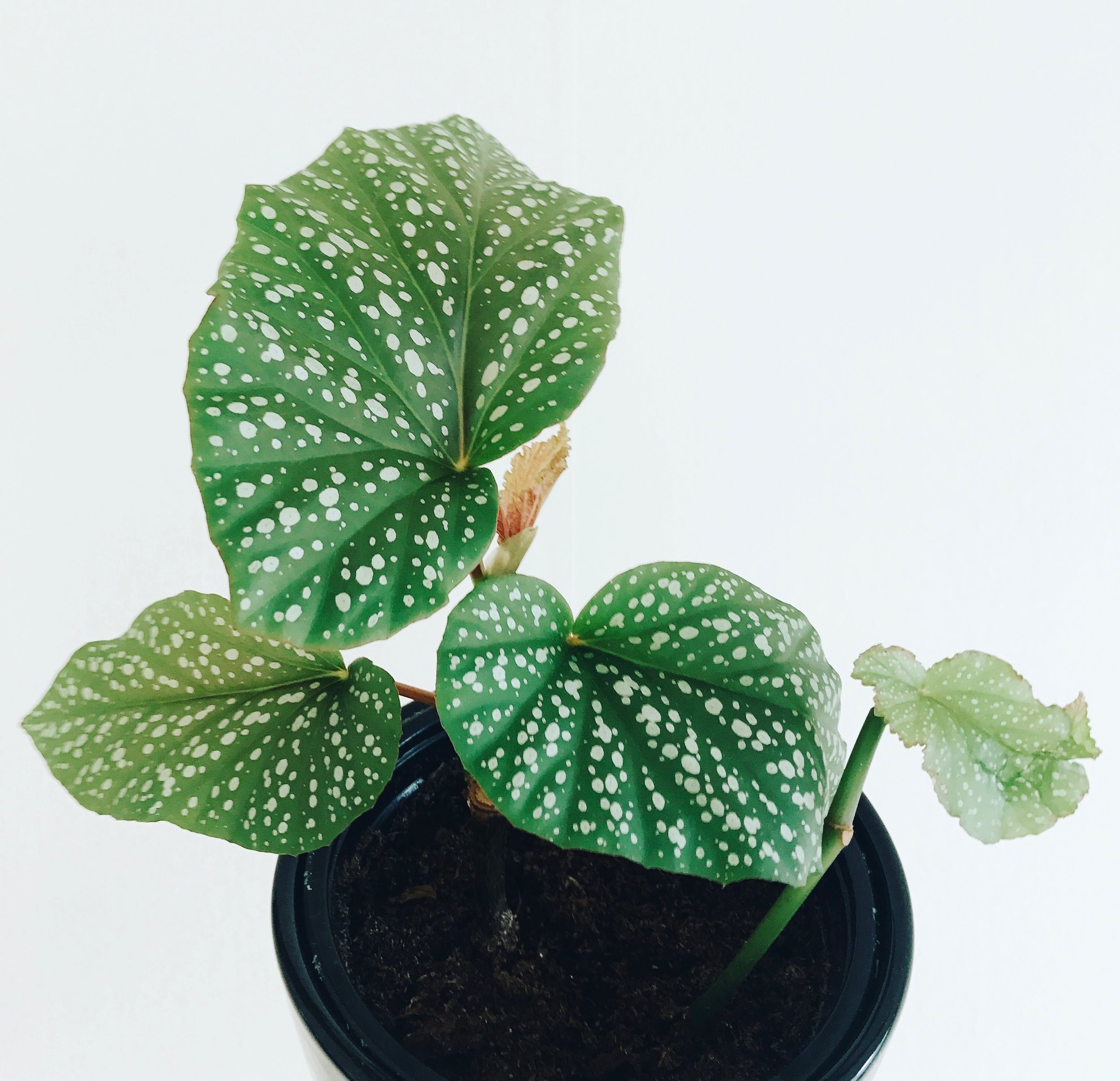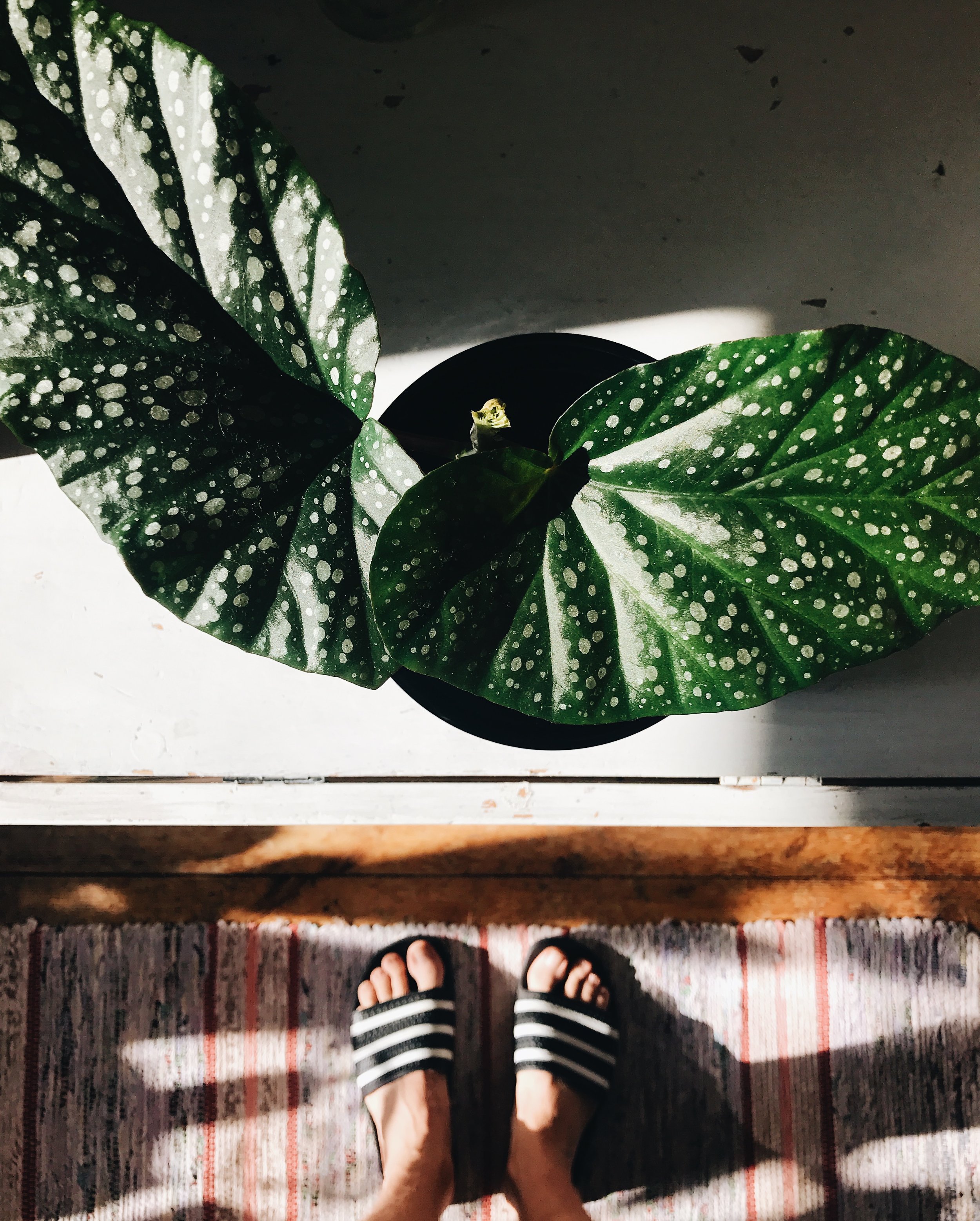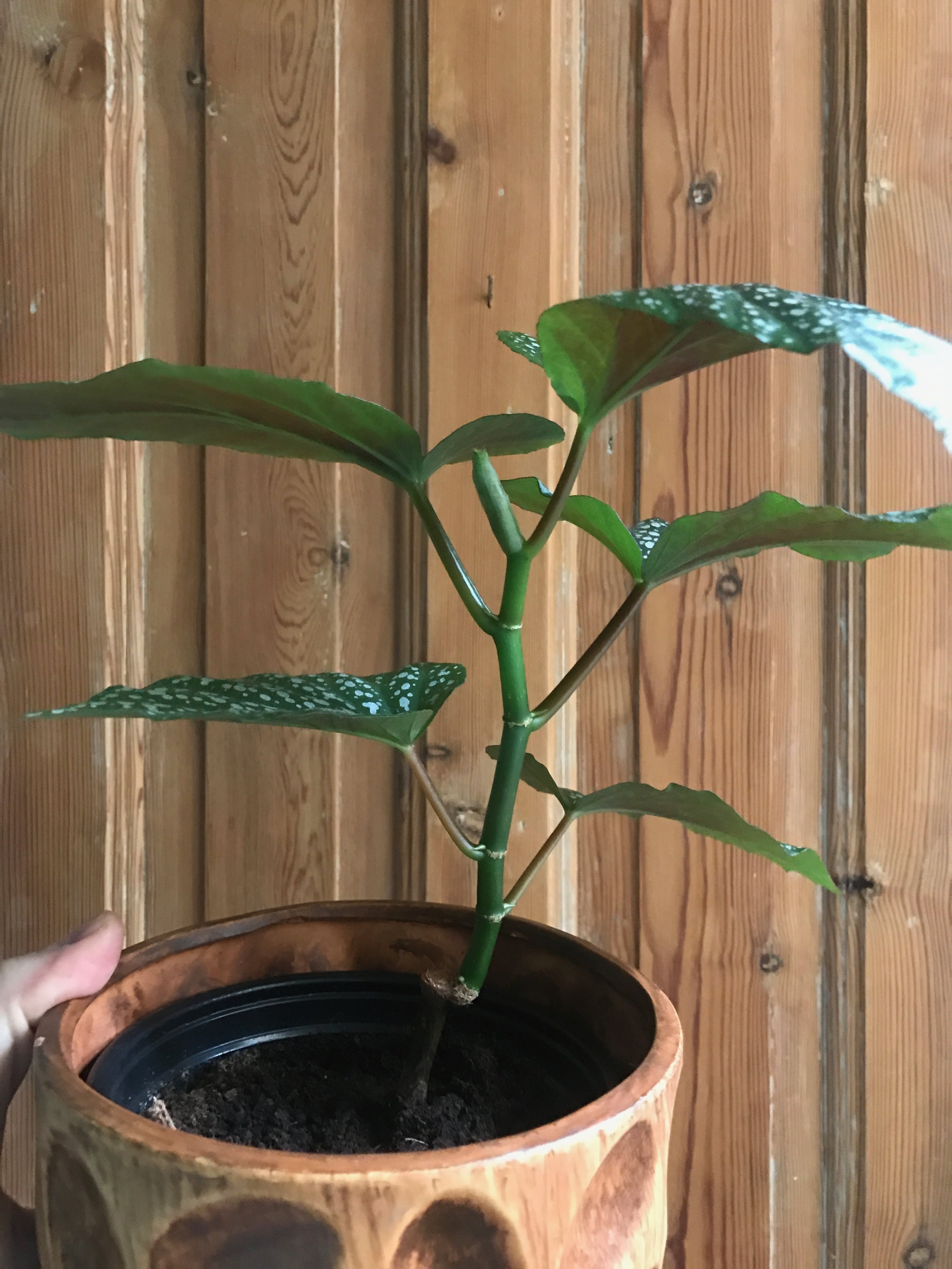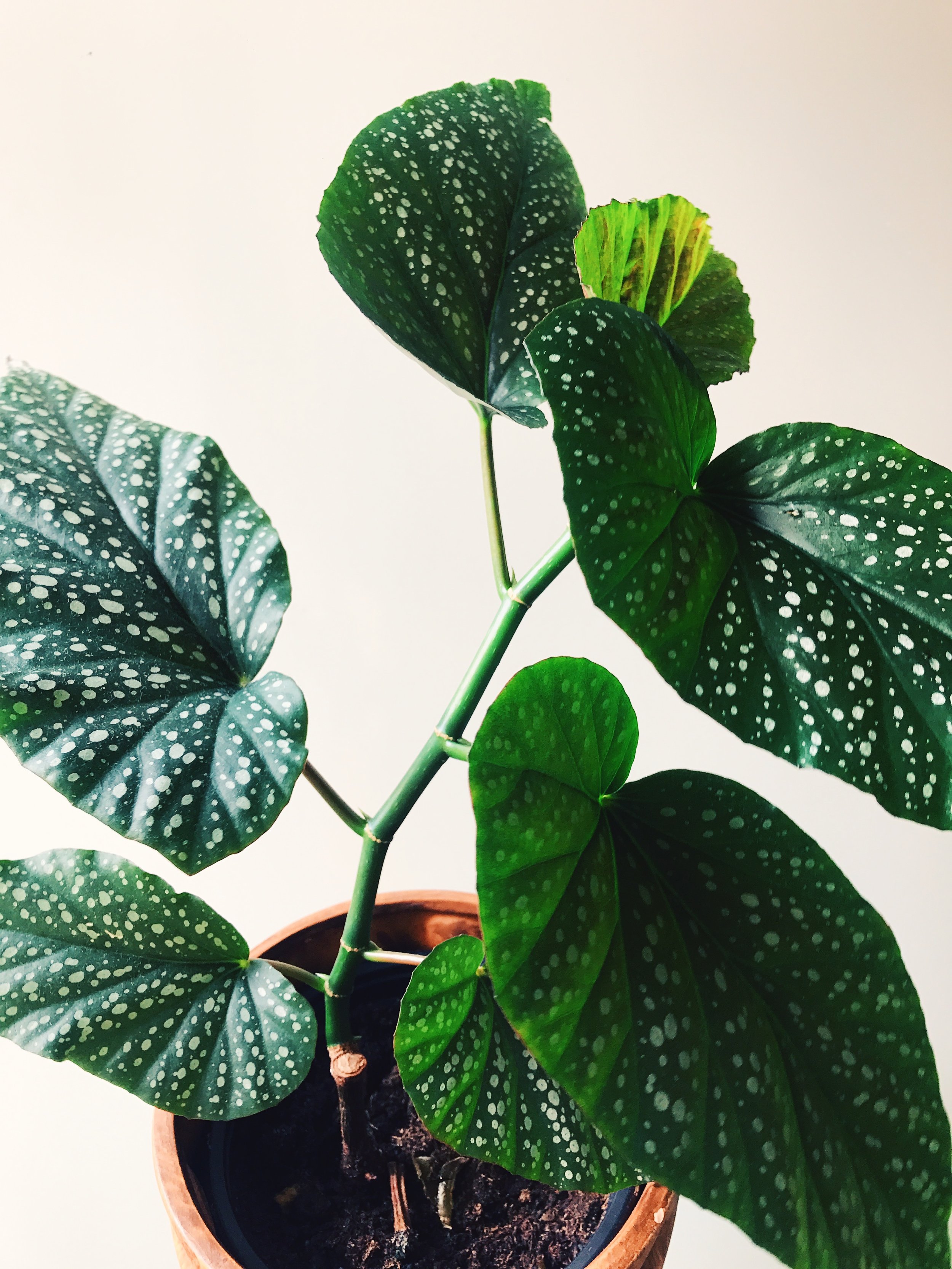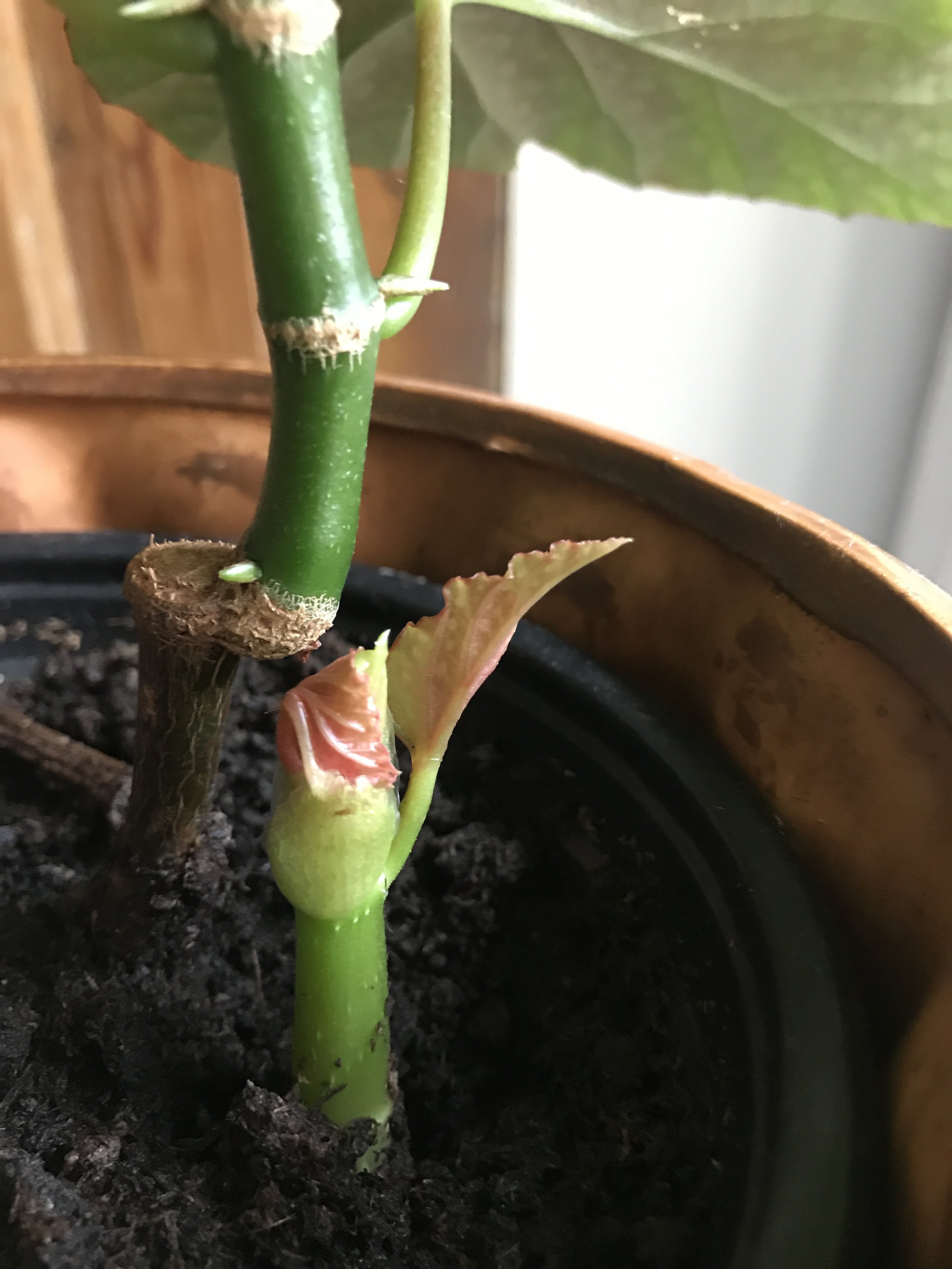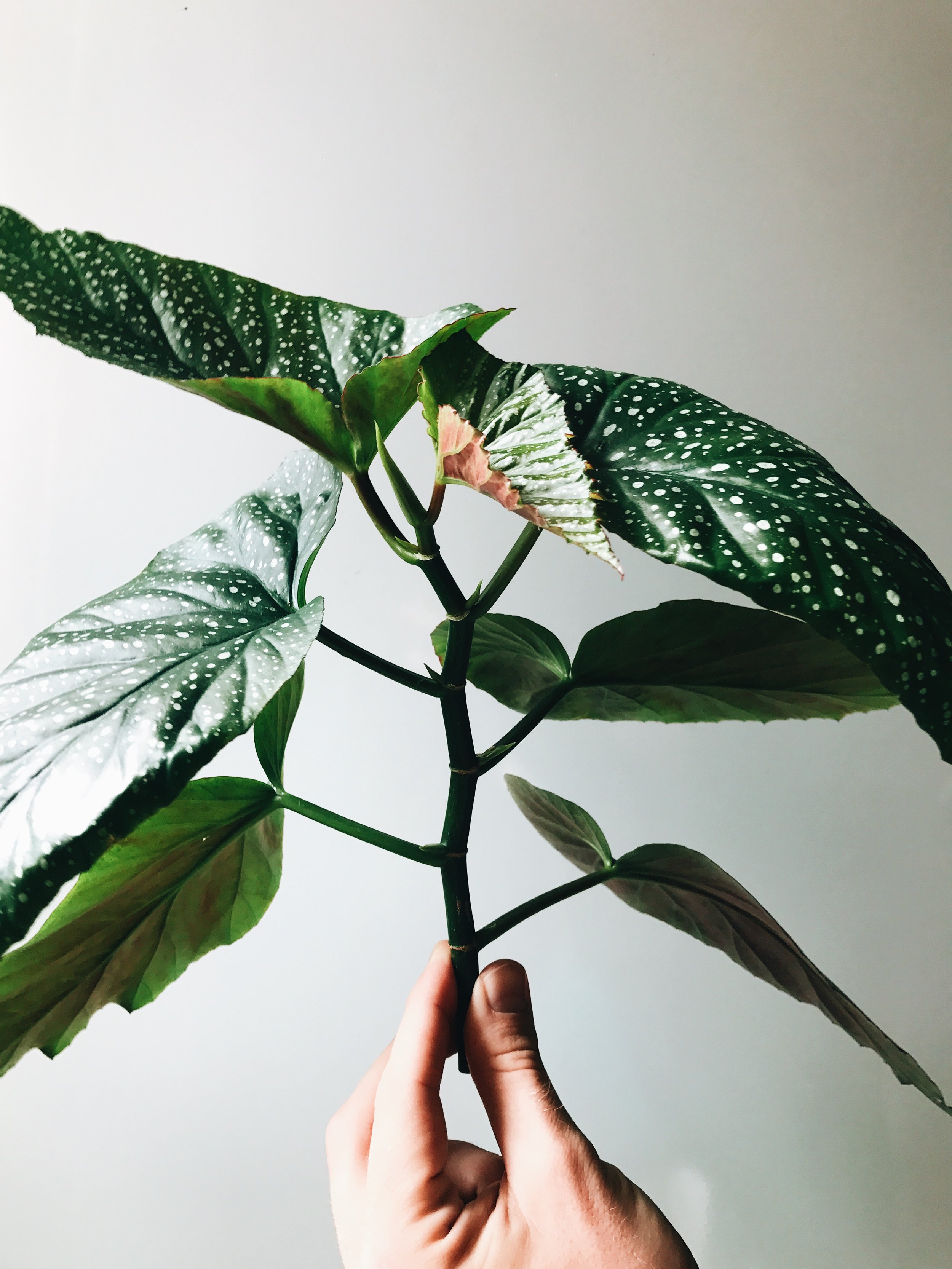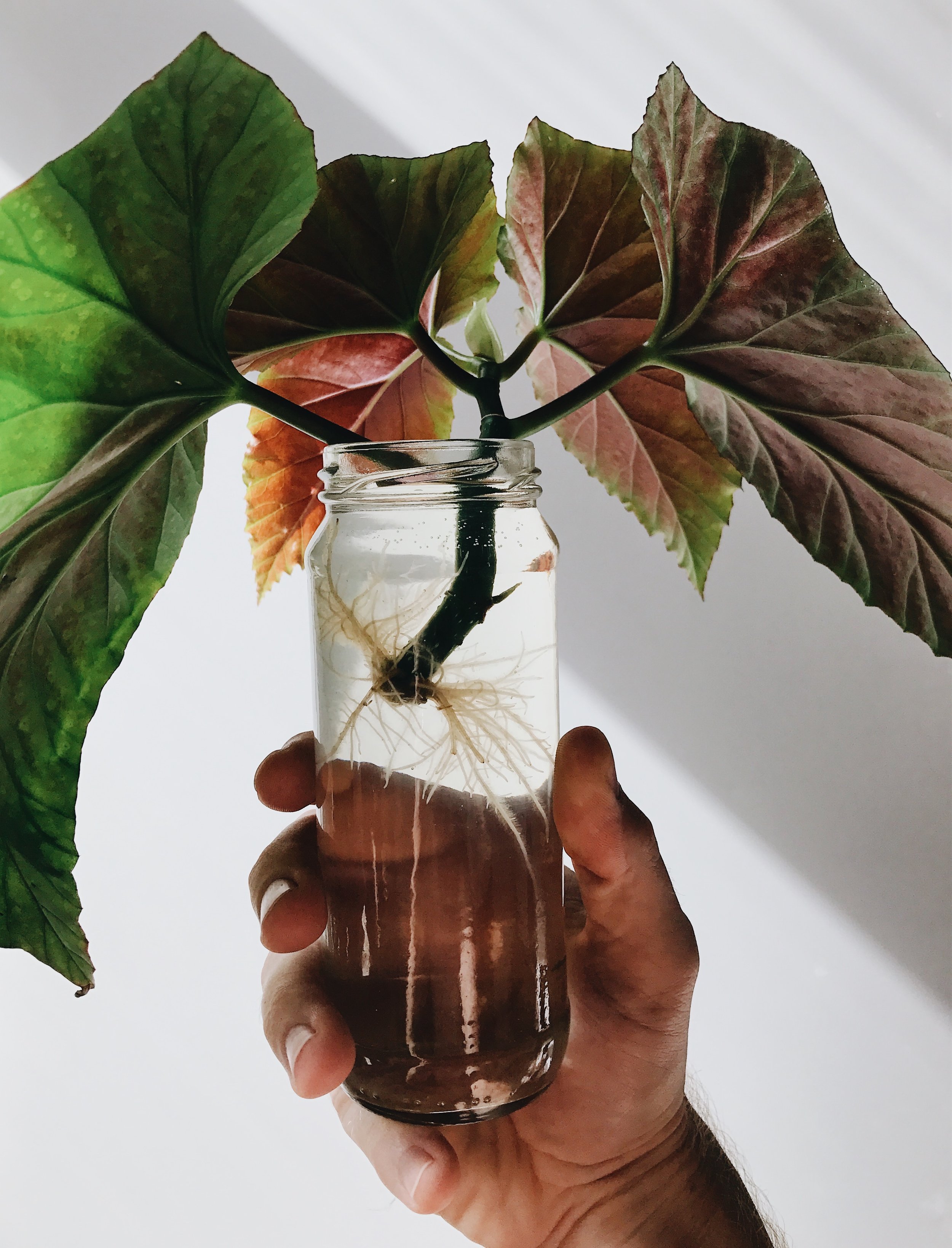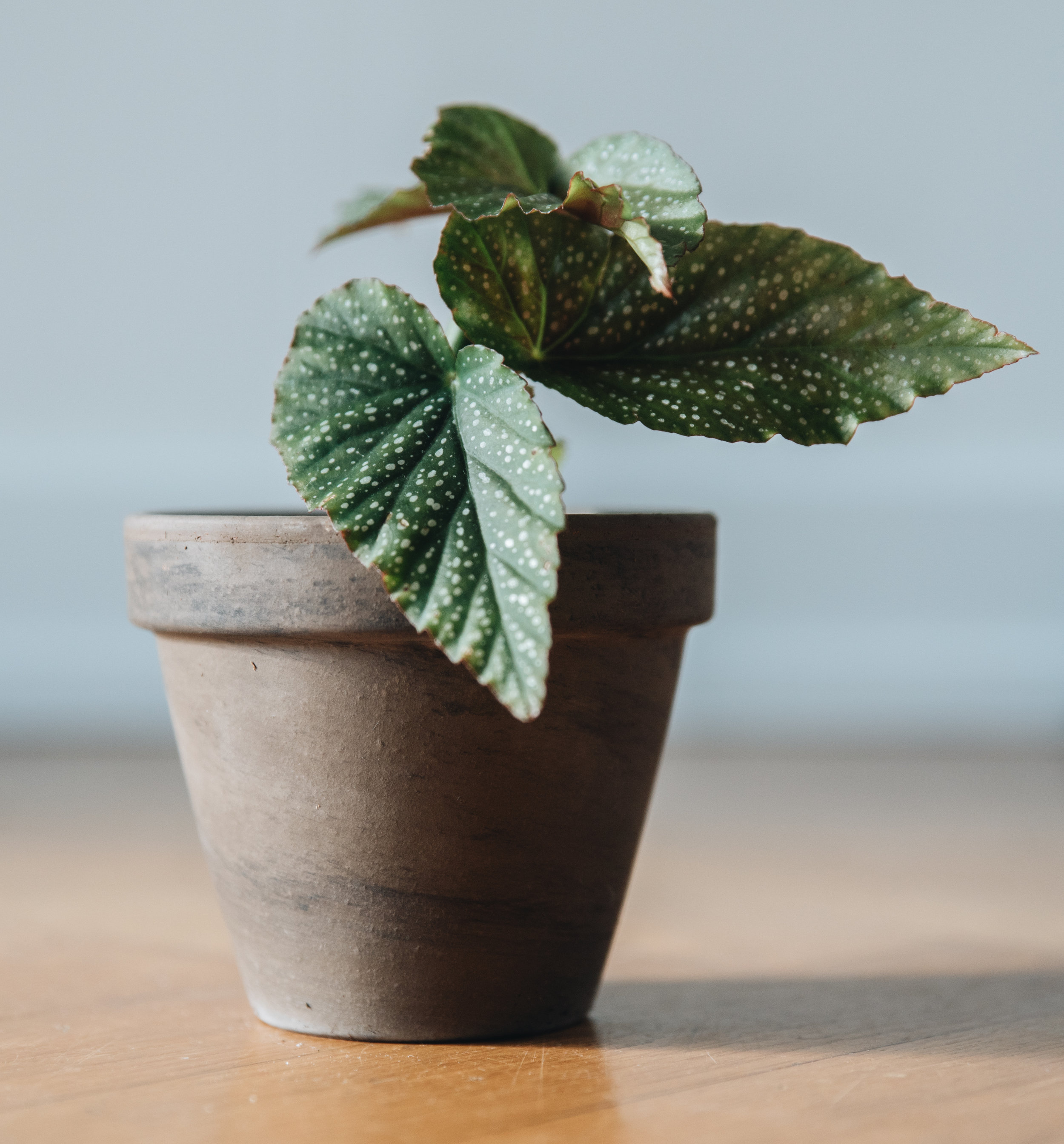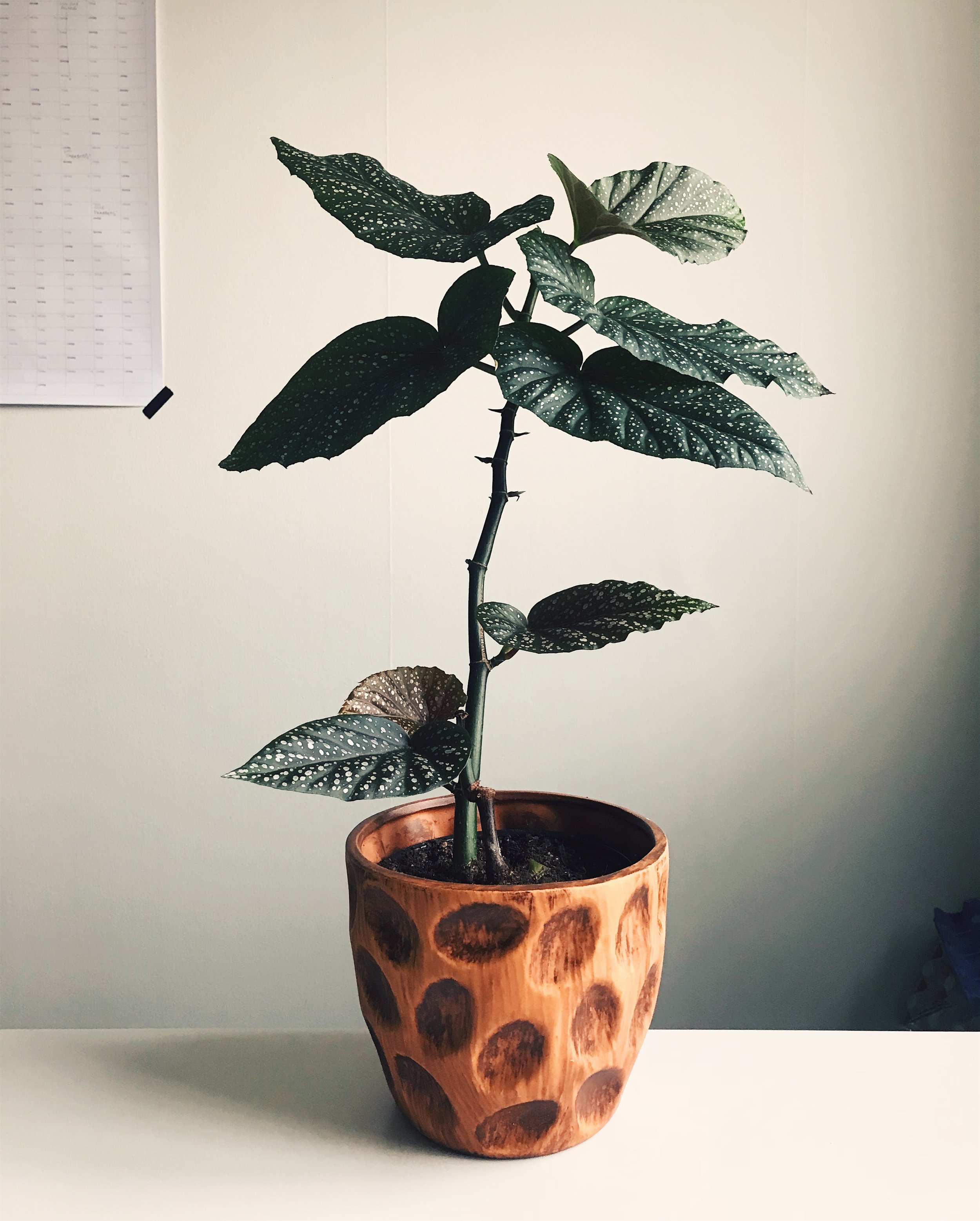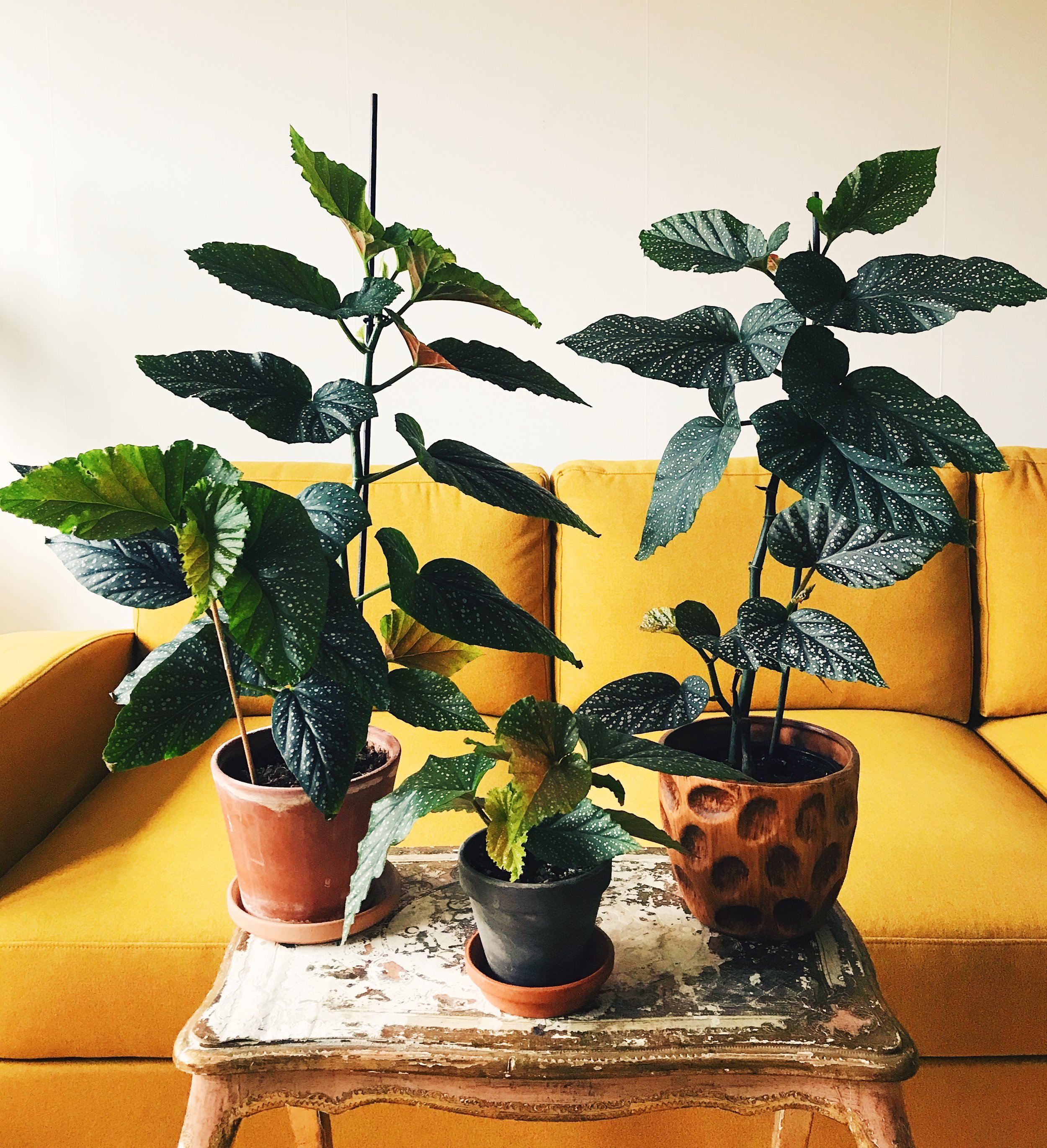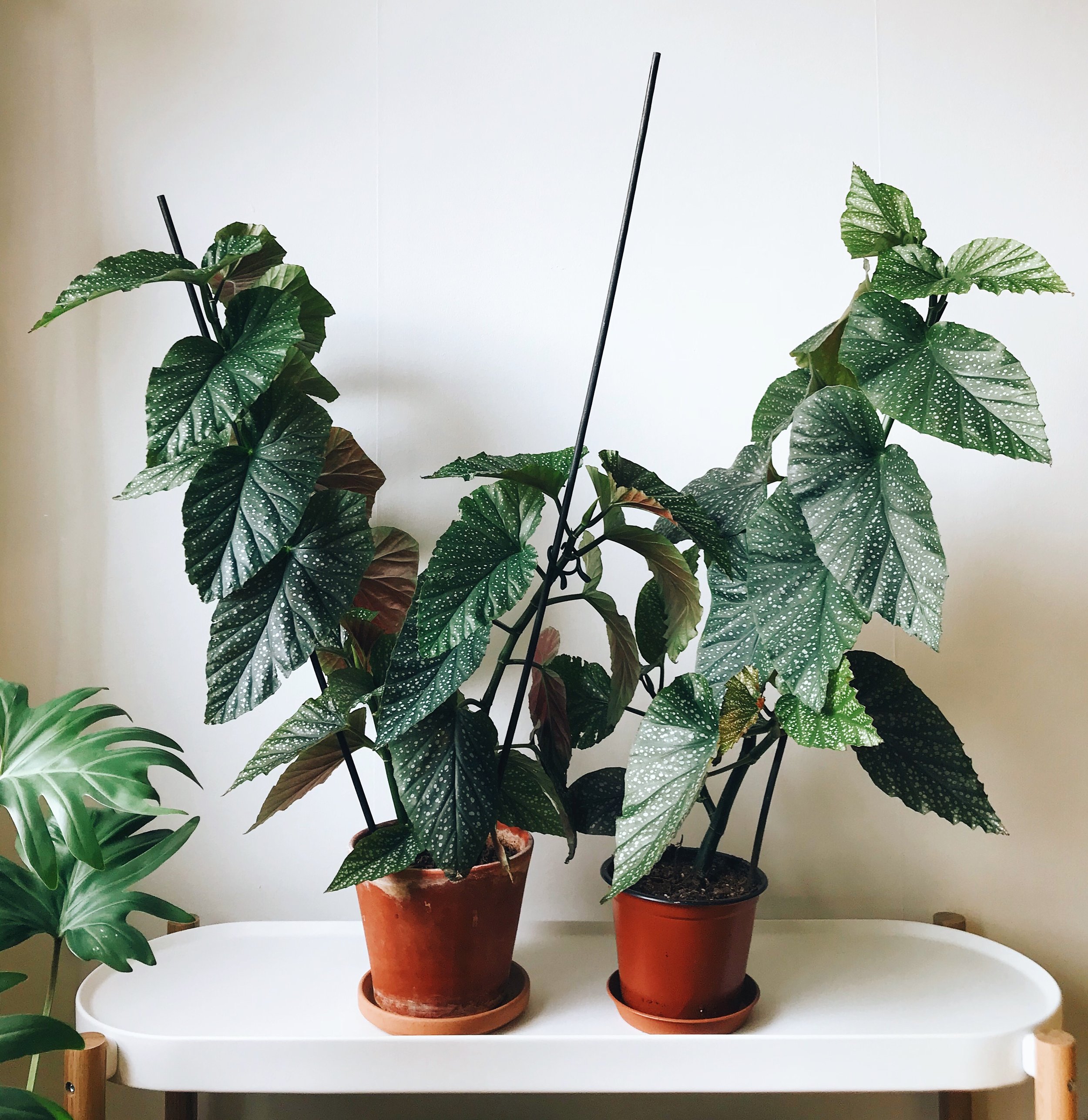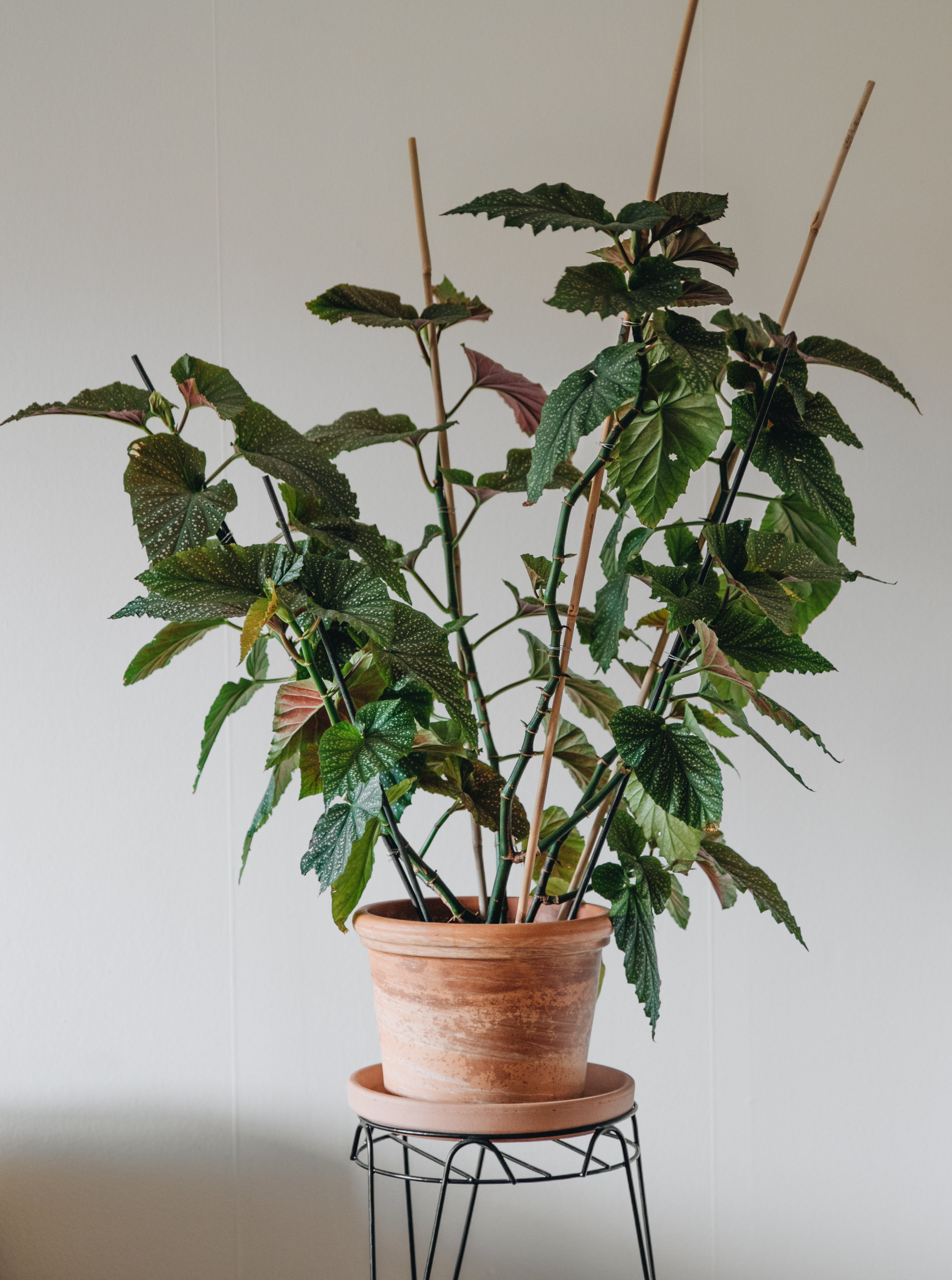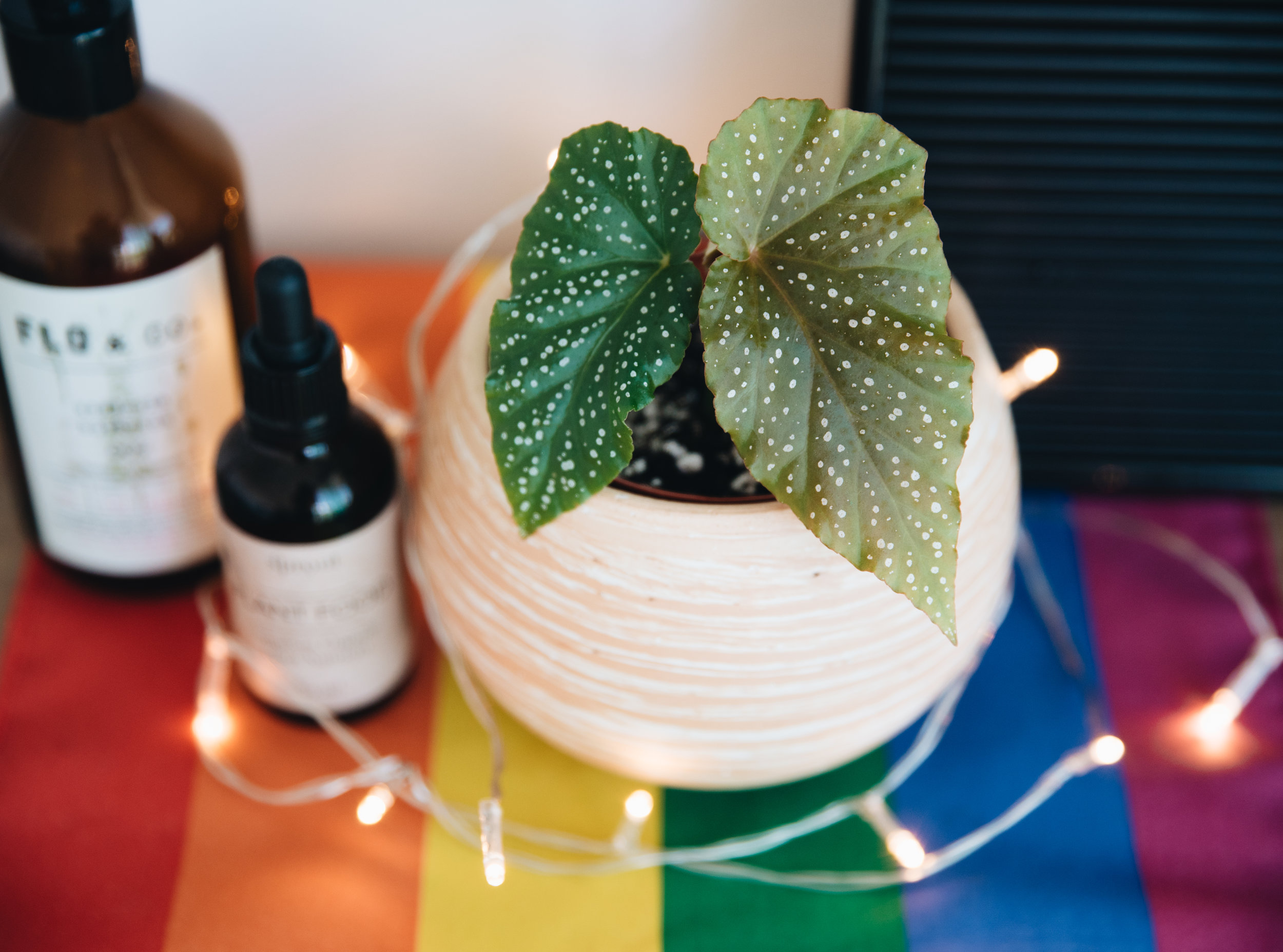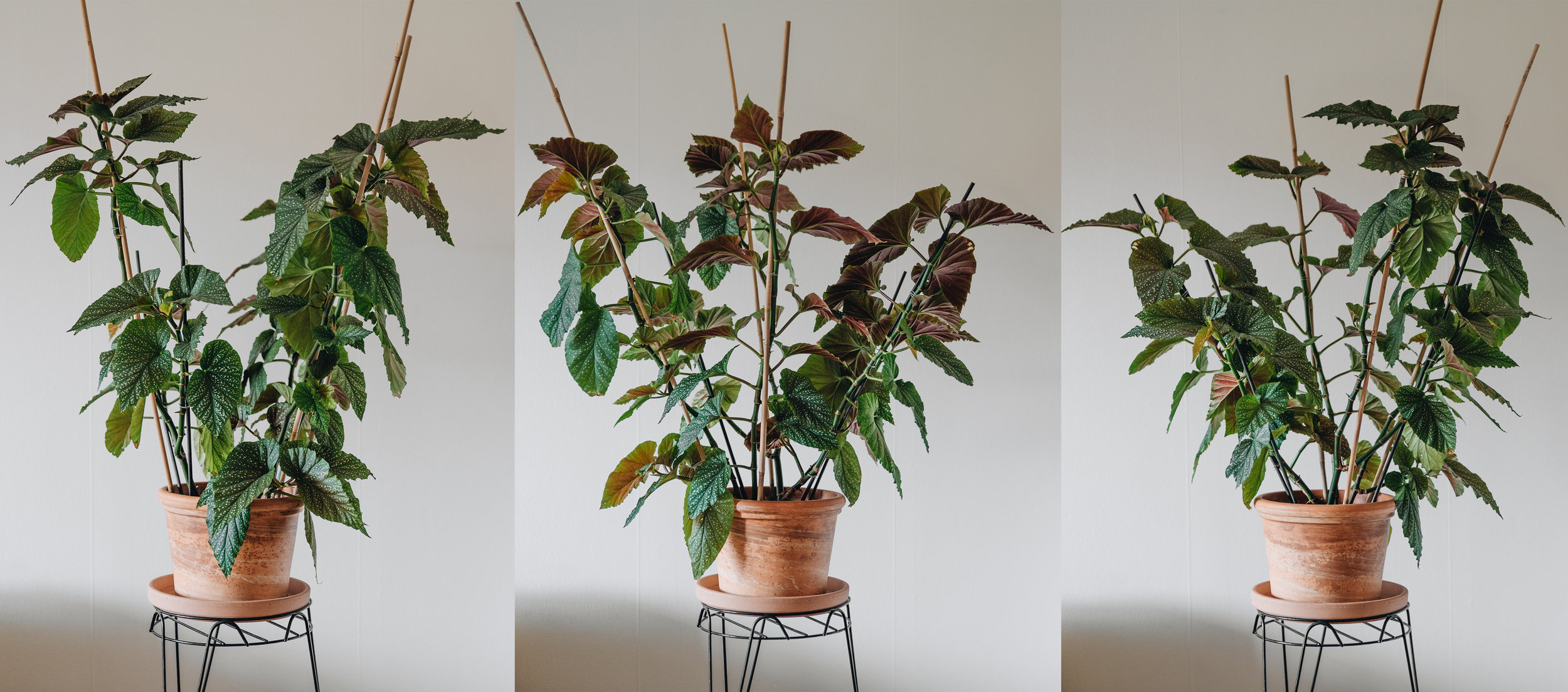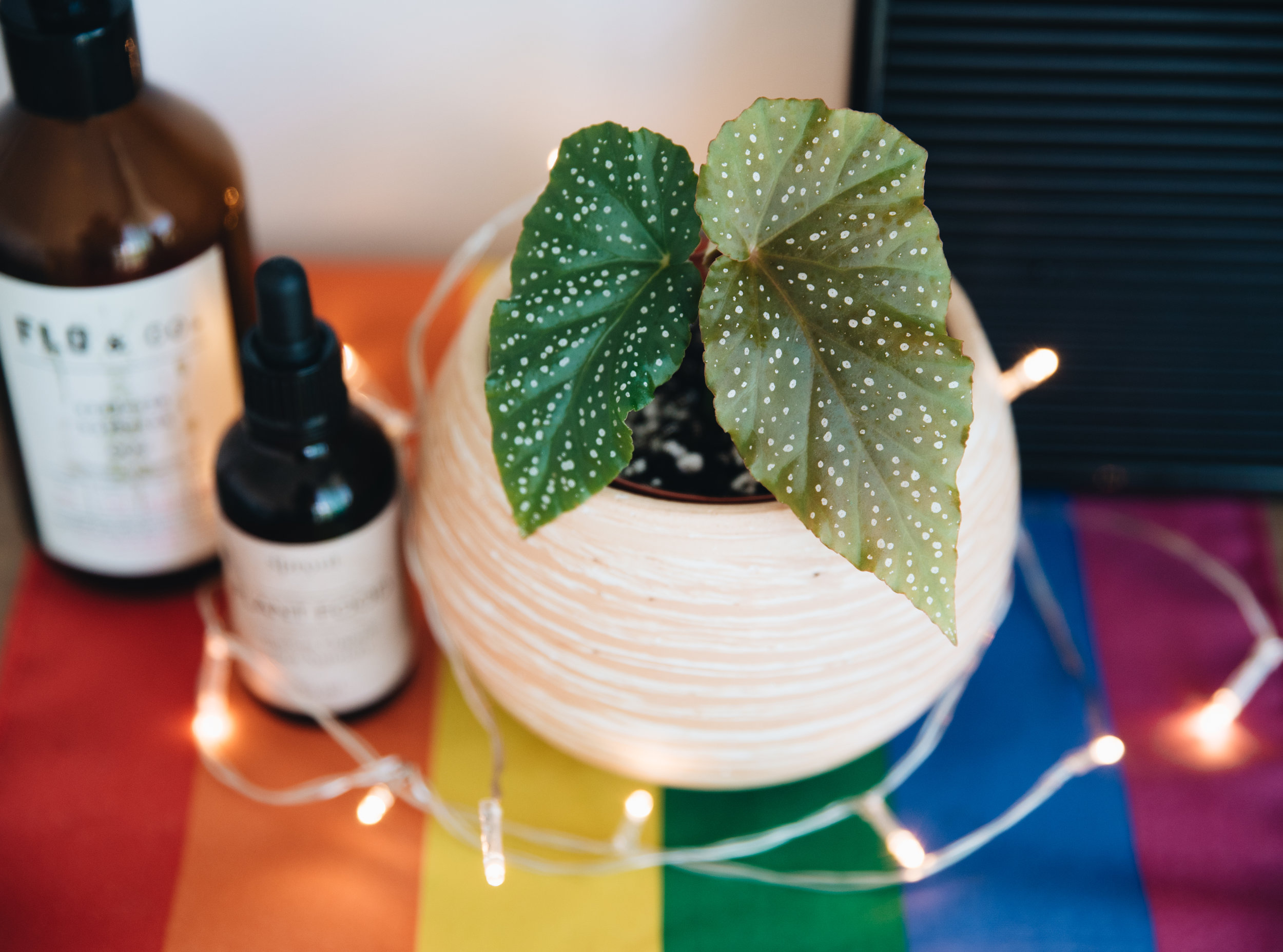Before we dig into learning more about this fantastic plant, make sure to follow me on Instagram! Thanks!
Among all of the 1400+ varieties of begonias, one always stood out to me. It’s commonly known as Angel Wing Begonia, or sometimes as Begonia lucerna, but it’s actually a hybrid whose full name is Begonia ‘Corallina de Lucerna’. And according to my readings, this hybrid came to life when the mysterious Eva Kenworthy Gray (I like to think she looked like Eva Green in Penny Dreadful) successfully crossed two varieties in 1926. A tiny parentheses: Eva loved begonias so much she wrote a book about them, and obviously she decided to call the book “Begonias”!
The two types she crossed were Begonia coccinea ‘lucerna’, a sturdier, simpler and clear green plant and Begonia aconitifolia, a more fragile and thin maple-like begonia with a silvery metallic pattern. The hybrid she created didn’t look exactly like the popular Angel Wing Begonia of today, but her creation seems to have been the start of this particular genre of Begonias – silvery dotted leaves that when paired next to each other look like the back of an angel.
My first encounter with Begonia ‘Corallina de Lucerna’ (which I shall call Corallina from here on) was in November of 2016. I was living in Stockholm at the time. I was just casually checking Facebook, and I stumbled upon a new post in a plant group I was a part of. An older lady in another city wanted to sell a couple of tiny cuttings from her begonia. There was a picture of two bare stem cuttings, and she just called the plant “Angel Wing Begonia”. Without knowing what the plant actually would look like, I asked her if I could buy them. She really didn’t want any money for them, just for me to pay the shipping (about one dollar). It was a done deal!
One of the two cuttings didn’t survive, the roots were too weak. But the other one grew up so fast, that within a couple of months I had a long stem with several leaves. And six months later, there was a new stem coming up from the soil next to the first one. As soon as it had grown a bit, I decided to cut off the first stem to propagate the plant and get even more begonia magic in my home. I repeated this a couple of times and soon I had two pretty big plants. A few months later, I brought them to a new apartment and a new city (Malmö). Then I decided to combine the two into one large pot, and voila, I had a big begonia bush in my living room!
The Corallina bush grew bigger and bigger, growing more branches and new stems than I could count. In one year it had gotten so big that I felt I had to cut it down at some point. But before I did so, we got the news that Vini had gotten a new job in Panama City, and so I had to sell all my plants and move on. But I couldn’t let go of my precious Corallina, could I? So before selling it, I took a couple of cuttings and gave them to friends and family. The plant had to live on! I also saved one long stem for myself. I divided the stem in four parts, cut off all the leaves, and brought the stem cuttings with me. They were without water, without roots and without soil. Just four tiny pieces of stem, all with one node each.
It took longer than I thought it would, but after about 5 weeks, roots sprouted and I recently planted my tiny cuttings. Each of them have a couple of leaves now, and pretty soon they’ll have more. The Corallina can be a slow starter, but when it’s fully charged, it doesn’t stop, ever. It grows and grows and grows. And that’s it folks, that’s the curious life of my Corallina. Hopefully it’ll get big and beautiful here in Panama soon. I’d like to think that Eva Kenworthy Gray would have been proud of how far my begonia has travelled.
So how do you take care of Corallina?
Well, it’s really one of the easiest plants you’ll ever meet. Most cane begonias are the same, so just follow my advice below and you’ll be fine.
CARE TIPS
Light: Lots of bright light, even direct sun unless it’s very strong. This plant doesn’t do well in darker spots of the room. My plant even thrived in direct sunlight all year around, but I’ve heard from others that their plants couldn’t handle direct sun all day in the summer.
Potting material: I usually use a mix of normal potting soil and perlite. You could throw a couple pieces of bark in there too if you like, but it’s really not necessary for the plant to thrive. Just see to it that it’s somewhat easy draining, because otherwise the roots may rot. I like to use terracotta pots for this begonia, since it helps the plant breathe if you accidentally give it too much water.
Water: Corallina drinks lots, especially in the summer. But if overwatering occurs, new leaves usually grow deformed and ugly, so try to let the top 2-3 centimeters of the soil dry out before watering. If you’re unsure if your plant is in need of water, check the leaves. Are the droopy and hanging, or are they bouncy and sturdy? If they’re droopy and sloppy, they are in desperate need of water!
Fertilizer: You can easily feed the Corallina once every other week. Most places say every week, but I always feed my plants a little bit less than what other people recommend, because then you know you won’t ever give them too much nutrition.
Propagation: You’ll want to cut off the top piece of the stem, with 2-3 leaves on it. Remove the bottom 1-2 leaves (or all of them if you like). Just make sure that there is 1 or 2 nodes on the piece of stem, where the new stem will start growing from. Either put it directly in soil (risk of rot, in my opinion) or put it in water and wait for roots to form. It will take around a month or a bit longer, and then you can plant it. Wait for the cutting to have more than just one tiny root before you plant it.
Brown/dry leaves: The environment could be too dry. Are you keeping the plant close to a heater? Try moving it to another spot. Are you overwatering? Try letting the soil dry up for longer between waterings.
Unnatural silvery/see-through spots: Could be bugs, like thrips. Check the back of the leaf thoroughly to see if there are any crawlies creeping around. See-through spots could also be lack of nutrition, or simply a sunburn.
Good luck! And if you have any questions, you can always comment below. Last but not least, here are some pictures in a chronological order, with time stamp and brief explanations (best viewed on a computer), from the life and times of my Corallina!

